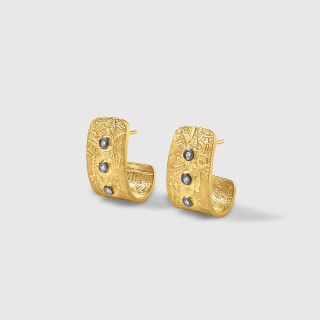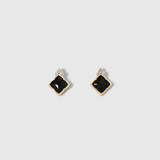BANSHU HAMONO
Banshu Hamono is a brand of cutlery products made in the Banshu region of Hyogo Prefecture, which is said to be the birthplace of the Japanese blacksmith industry. The cutlery industry in the Banshu region has a history of growing along with the development of Japanese industry and manufacturing cutlery with various designs according to customer requests. The history of the industrialization of general household cutlery is also the oldest in Japan, and it is said that it already existed in the Edo period (18th century) about 250 years ago. Banshu cutlery has a wide variety of scissors, which is not found in other regions. The blacksmith industry in Harima (present-day Banshu area of Hyogo Prefecture) is said to have already started in the early 16th century. Around 1532, Chigusa Hagane, the ancestor of Tamahagane, famous for being used for Japanese swords, was developed in Harima. It can be seen that blacksmithing work was actively carried out. Steel manufacturing technology was transmitted from Banshu to various regions, and it is said that this has led to the positional relationship of today's cutlery production areas. Banshu knives are carefully handcrafted one by one by skilled craftsmen. By sharpening it regularly, you can use it for a long time.
Banshu Hamono is a brand of blades, scissors and knives that are produced in the Banshu region in Hyogo prefecture, the oldest region where the blacksmith industry began in Japan. of items to meet the demand. The region is also known for the oldest region where household items were commercialized, dating back to the Edo era in the 18th century. A wide range of scissors is one of the features of Banshu Hamono that is unique to the region.
The blacksmith industry in the Banshu region, which was back then known as Harima, was said to have started as early as in the sixteenth century. By 1532, a type of steel called Chigusa-hagane was developed in the region, which indicates that the region was already home to a bustling blacksmith industry. Chigusa-hagane later became tama-hagane, a type of steel that is famously known for being used to make a katana, or Japanese sword. blades) had spread from the Banshu region to the other parts of Japan. Some of those other regions are still known for making blades today. Each piece of Banshu Hamono is meticulously handmade by skilled craftsmen. long time.
According to the historical records of Banshu cutlery , we can see the beginning of the razor (Mataemon) in the Enkyo era (1744-48). After that, nigiri scissors (Sobei) started in 1807, kitchen knives started in Bunka 1804 (1804-1818), knives (Nisaburo Inoue) started in 1909, and cutting scissors (Rashakiri) started in 1930. It is said that These household knives spread in the Banshu region (around Ono) as a side business of agriculture, and developed thanks to excellent production techniques and a blessed labor force. Furthermore, due to the sudden changes in the social situation caused by the Meiji Restoration, technical research and product ideas for scissors progressed, and cutting scissors, Ikenobo scissors, pruning scissors, and haircut scissors were developed. established the foundation for Sickles are also widely produced in the Banshu region. Sickles account for 80% of national production and have a history of about 200 years. Isuke Fujiwara, a swordsmith of the former Ichiyanagi clan, began to improve the manufacturing method of sickles by applying knife manufacturing techniques. After the war, with the mechanization of agriculture, resources for knife manufacturing increased, quality and technology improved, and Banshu made further progress as a cutlery production area. In Banshu, in addition to home cutlery such as sickles and scissors, there are many products such as tools and carpentry tools. As a result, the Banshu region's superior products have come to be known to consumers all over the country. However, craftsmen's products in the field of handmade blacksmiths have been overwhelmed by mass-produced products, and in recent years the scale of industry in the Banshu region has shrunk significantly. Craftsmen are aging and there is a shortage of young successors to take over their craftsmanship. The problem of successors is the most serious issue in the Banshu region.
In 2013, the limited liability company Coelacanth Shokudo (MUJUN) created a new regional brand "Banshu Cutlery" at the request of the Ono Hardware Wholesalers Association in order to solve this situation by preserving and conveying the craftsmanship of the Banshu region. rice field. Banshu Hamono is a brand made up of various cutlery craftsmen in each field representing the production area. The role of this brand is to protect traditional skills and nurture future craftsmen together with customers who appreciate our history, quality and craftsmanship.
VIEW OUR COLLECTION OF BANSHU TOOLS IN THE GALLERY
Featured Favorites
-

-

Detailed Cicada Pendant Necklace with Diamond Eyes, Sterling Silver
ET-WS-AC-CicadaPendantSterling
€704.49 -

-



 US Dollars (USD)
US Dollars (USD)
 British Pound (GBP)
British Pound (GBP)








